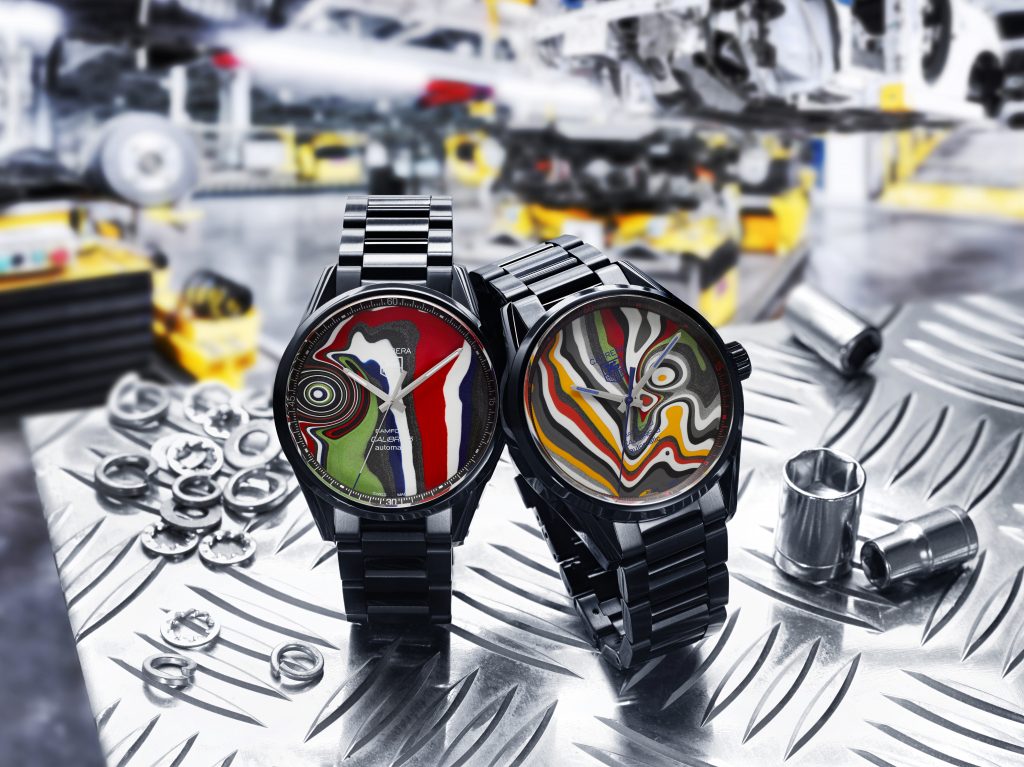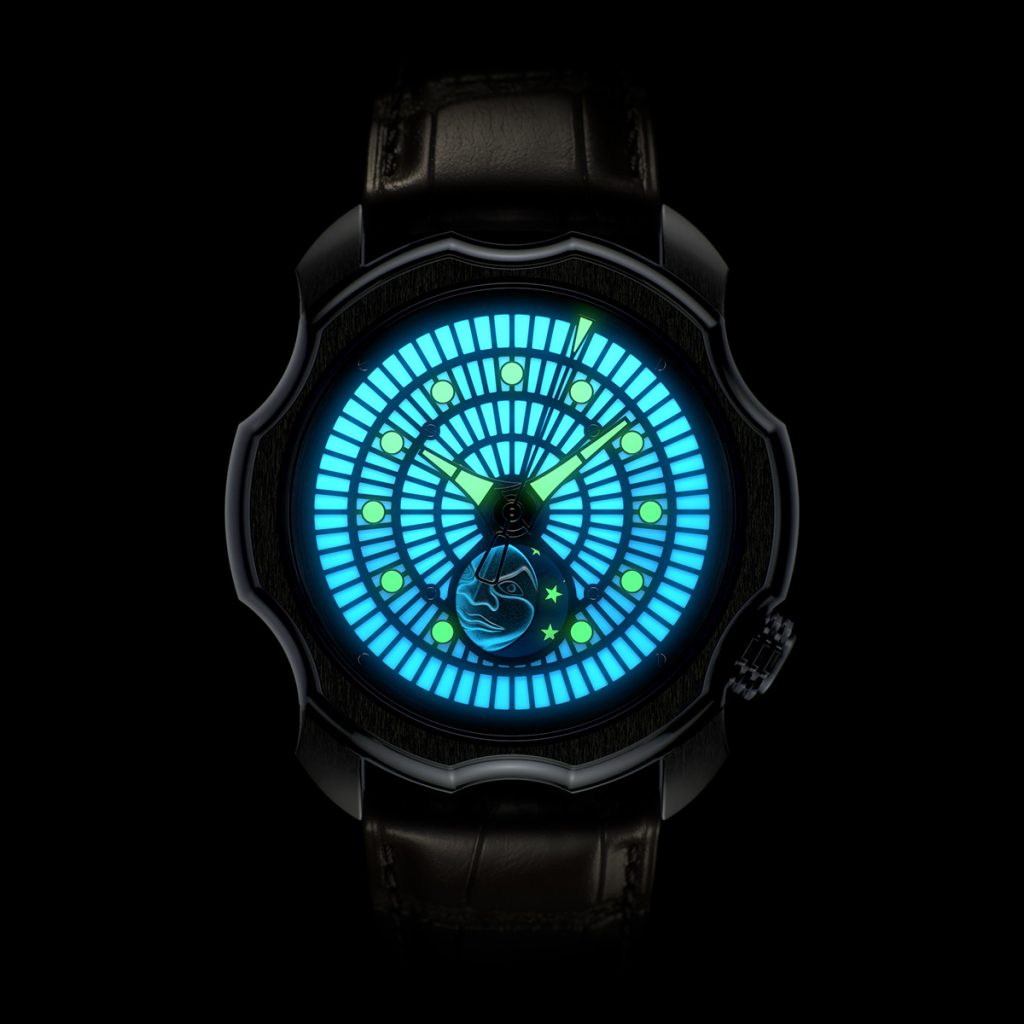Interview: James Thompson of Black Badger
From jewelry and watches made from NASA-grade materials to next-generation submarines, this designer knows no boundaries

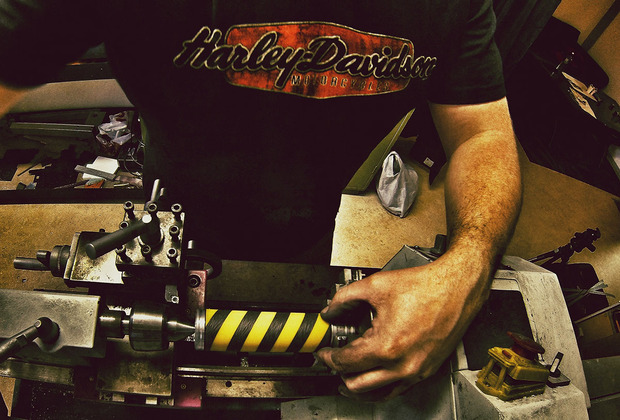
Black Badger Advanced Composites might not be a name you’re familiar with, but founder James Thompson is in demand from all quarters right now. In a remarkably short period of time, this Canadian-born resident of Gothenburg, Sweden has enjoyed a career path that has seen him chat watches with the CEO of Bell & Ross, design next-gen submarines for the Royal Australian Navy, collaborate with the Caterham F1 team and use a plethora of NASA-grade materials for his multi-faceted jewellery work.
Often pictured with his hands covered in some sort of exotic dust, face masked with breathing apparatus and bent over milling machines, Thompson produces work that is breathtakingly beautiful, staggeringly technical in its construction and mind-bendingly interesting.
On the cusp of another groundbreaking project, drafted to consult on Giles Ellis’ Blacklamp watchhotly tipped to be the talk of November’s Salon QP in Londonwe dropped Thompson a line to talk about dropping out, making his mom cry, working with NASA’s Moonglow and what he does with Red Bull F1’s skid-plates.
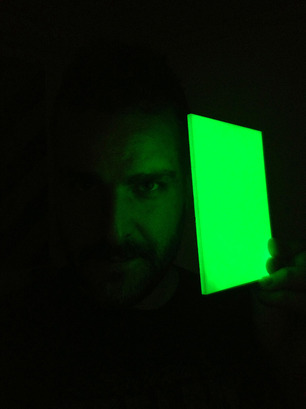
First, why Sweden?
I came to Sweden in 2002. I had flunked out of my design school in Vancouver, just never really happy there. This was around the 2000 or so, so essentially everything we had to make either looked like a new VW Beetle or some kinda whimsical Alessi cheese-grater with googley-eyes on it. It was all just styling, without any real substance. It didn’t really even seem to matter what you did, as long as you could do a nice sexy sketch of it. It was all just so much fluff. Design masturbation, if you will pardon the expression. At the same time we had an exchange student from Sweden with us who was telling me about a different method they use to teach design there. There were no grades, it was just pass or fail. This was revolutionary for me, as it really sounded like a way to go nuts and push the edges. So, as I was just hating life at the school in Vancouver, I started thinking maybe I’d just give Sweden a go. My father was born in England; I have a UK passport, so coming to and studying in the EU was much easier for me than it would have been otherwise.
Where did you study and what?
I applied and was accepted to the masters design program at Ingvar Kamprad Designcentrum at Lund University. (Ingvar Kamprad being the IK in IKEA, by the way.)
I left everything I knew behind and moved to Europe by myself. I was essentially homeless the first few months. I moved about six or seven times the first month, as I couldn’t find student accommodation. I even lived in a place that I later found out was used to smuggle prostitutes into Sweden from Eastern Europe. My mom cried when I told her that a few years later.
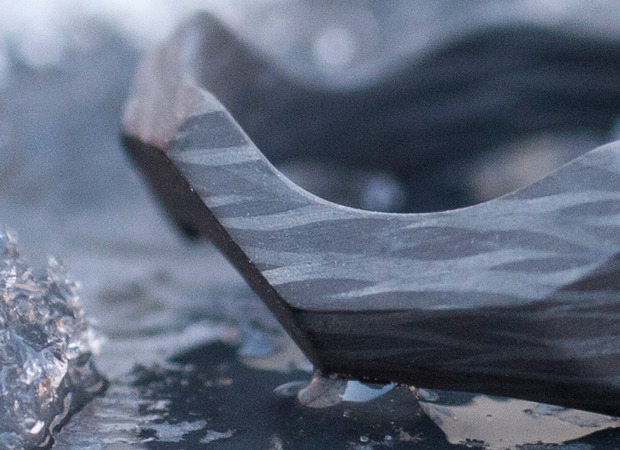
About a year and a bit into the program, the department head comes to me and asks me if I was planning on graduating there. Naturally I said I was working towards that. Well, apparently the program was in the midst of trying to figure out if it was going to be an international masters program or a normal Swedish one, and they couldn’t figure out where I would fit in. So rather unceremoniously I was dumped out of the masters design program mid-semester. Not to be morose or overly dramatic, but I don’t think I’ll forgive them for that.
This is the period when I started Black Badger Advanced Composites. I was bored, angry, and lacking purpose.I had always been into new materials, something I attribute that to my younger days when I was a fanatic cyclist. Everything was titanium and carbon fiber, and just oozed coolness in my view. While studying in Vancouver I was always playing in the machine shops, making little titanium rings on a lathe for friends and family. I had tried making a few carbon fiber projects, but of course I just totally screwed them up. My dad still reminds me about the page from the Vancouver Sun newspaper from 1998 that is permanently epoxied to his garage floor.
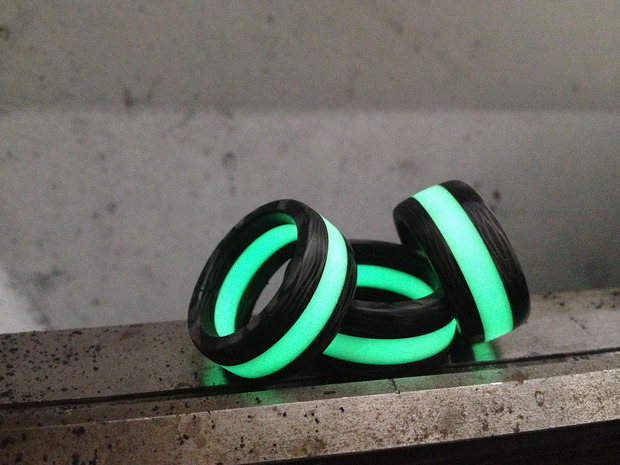
Was it logical to move into what you work with now, or has working with composites been an interest that has blossomed over time?
I think it really was a logical progression. I’ve always been attracted to materials that are uncommon or emerging. Carbon fiber just has such cache to it, just such an aura of stealth bomber, Area 51, ninja-cool about it. My work with it has always been centred around bringing these materials into our everyday lives. But it’s how I work with these materials that sets Black Badger apart from other makers and designers. I never liked just sitting at a computer or sketching all day, I’ve always needed to get hands-on with the projects. With these materials its always been like that, a very “I wonder if this will work” kind of approach. That occasionally has me sprinting like hell for the fire extinguisher, but I’m OK with that.
It’s easy to imagine that your work has evolved over time, and that you’re merely at the tip of the proverbial iceberg called potential. Give us some highlights over the years.
Well, without question one of the biggest boosts was when I was accepted to the design masters program at HDK design school in Gothenburg. This was in 2008, I had been working full-time with Black Badger for about two years, but I hadn’t really found my footing. I was working with a few different composites facilities in southern Sweden, but I was a bit lost to be honest. When I was accepted to HDK, it was a massive boost.
It woke up all those design-y parts of myself; it was like being born again. We did collaborative projects with Volvo that were some of the most inspiring I’ve ever been part of. For my term project with them, I designed a seatbelt specifically for pregnant drivers
When it came time for my masters thesis project in 2010, I decided to work with one of my best friends, a Swedish classmate, Mattias Sjberg. Through a rather odd series of events, for our thesis, Sjberg and I were invited to South Australia to spend several months doing on-site work there helping design next-generation submarines for the Royal Australian Navy. We were the only two “designers” among 75 engineers, we felt a bit like missionaries. It was an amazing project, and it became more about the psychological aspects of design, rather than just making an object that solved a problem. The experience was amazingnot a lot of jewellery designers get to work on a navy submarine.
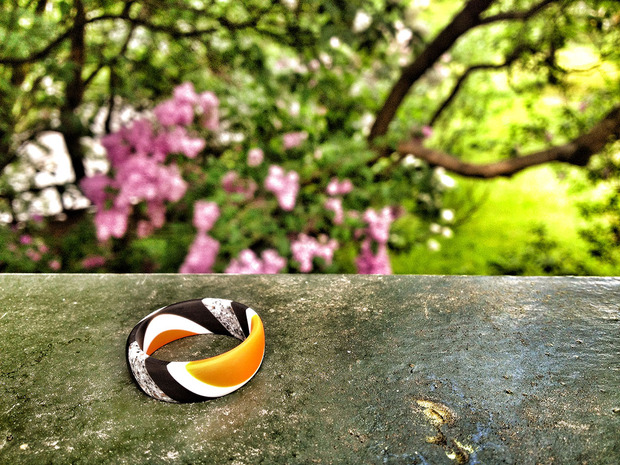
I think what makes Black Badger special is its adaptability. It can be whatever is needed of it. Where it is making the most noise these days is in a series of collaborationssome really exciting things are underway. I love collabs. They let everyone bring their strongpoints to the table, let you make some kind of Ocean’s 11 super-team.
I use a term “The Zeiss Effect,” Carl Zeiss, the fantastic Swiss lens and optics manufacturer. If you think about Zeiss-branded camera, it would cost a fortune. But when you pick up a new Nikon or Lumix, and on the lens spells Zeiss, it adds that extra element to it. I think that’s where I’m finding my footing in the world now, as this kind of a guest-star actor on a show. Just pop in, make some noise, and be off to the next gig. It keeps it fresh and exciting.
Currently I’m collaborating on various levels with Warrs Harley-Davidson of London, the Caterham F1 team, Schofield Watch Company, and some others that I can’t really get into. I’ve also just launched Black Badger Straps with a partner in Wales, Gary Pemberthy of Watch Obsession. We are having a pile of fun with that, just crazy experimental. Actually I just got an email the other day asking if we could make a strap for a client’s 130,000 timepiece. Yikes, no pressure there!
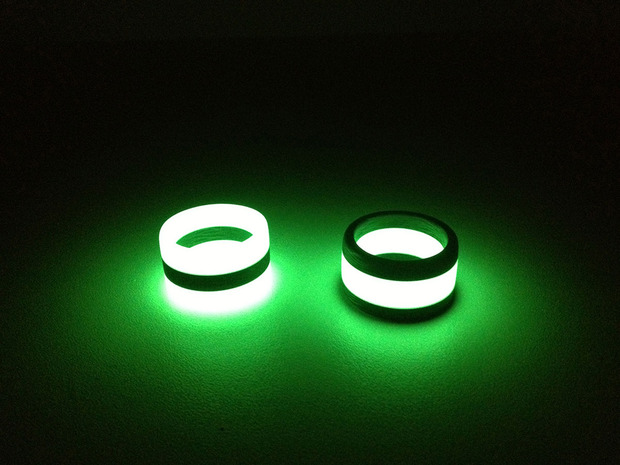
How would you describe your work?
Am I the right person to answer that? I’d say Black Badger exists on the outside of several industries, without really belonging to any. Jewellery, design, motorsports, fashion. I don’t really, truly belong to any of these fields. But this semi-involvement lets everything stay very liquid and adaptable. It’s like design jazz; it’s reactive. Say it this way: When Gwen Stefani marries the Stig, I’ll make their wedding rings.
Is there anywhere, anything, or anyone you’d like to investigate and explore creatively?
Everythingand in a completely random order. I have the attention span of a cat who just quit smoking, so I need to be able to bounce around. The timepiece industry is a major fascination of mine, and I’m extremely thankful that I’m able to be taking these baby-steps into it. And that industry links into so many othersfashion, racing, militarythat it’s just perfect for me.
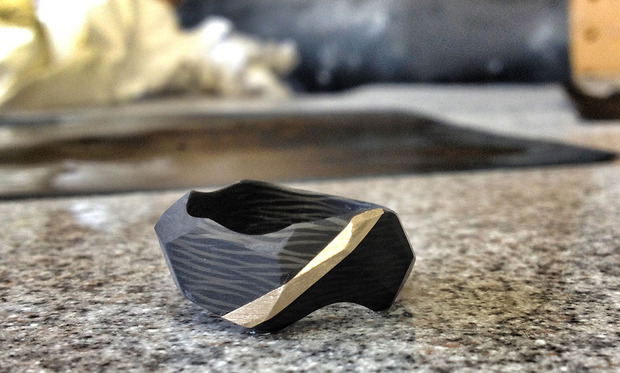
Black Badger haves a strong following in the watch world. Why do you think that is?
Well that’s where I really have caught my breaks. I got to know Carlos Rosilo and Bruno Belamich of Bell & Ross after a photography competition in 2011. Last time I was in Paris I popped by Bell & Ross HQ and had a nice chat with Carlos. How many designers who are totally unknown get to sit across from the CEO of a major brand and just chat about watches? It was such a treat, I’m so thankful for things like that.
I think Black Badger appeals to the watch industry because several aspects of that industry revolves around that I happen to work very hard at. One of them is the notion of storytelling. In my work, materials play a large part in this storytelling aspect. I’ve just launched a very limited edition series of rings that incorporate material milled from the skid-plate of a Red Bull Racing F1. The material looks rather subtle, and its only when the wearer tells someone about its origin that someone at the other end of the table jumps up and comes over all excited. That’s the kind of secondary appeal I really like.
An advantage of being a one-man-show like I am is that small projects are so much easier. If you go to a major brand and try and do a small limited run, of five or 10 units, the cost would be astronomical. And the headaches of dealing with the bureaucracy of a major company as well. Whereas with me, companies can use me as a bit of a Skunkworksan unofficial testlab to try out stuff when they have no idea if it will work or not. Failure is always an option, right?

A good deal of your work digs into the complex science behind glow-in-the-dark and self-illuminating materials. Why is that so appealing?
It’s that little bit of magic that they have, that little piece of our childhood they speak to inside us. Everyone takes on this childish “ooh” kind of face when I show them one of the illuminated rings. It’s great fun! What I love about the way I get to work with carbon fiber is the contrast. The contrast between taking perhaps the most synthetic material on the planet, and making it look organic by hand-working it. I could CNC and robomake everything, but then who the hell would care? Where would the soul be? This contrast is where I really find my position.
With my carbon fiber rings, I’m almost exclusively working with solid plate material. So instead of moulding and wrapping the cloth and doing all the vacuum bagging and stuff, I’m milling the rings from a thick laminate plate. What this does is it let me highlight the cross-section of the material. Let’s be honest, carbon fiber is just plywood’s sexy sister, but the cross-section of a thicker laminate plate has the most amazing woodgrain effect to it. And when you mill a ring from that, and start shaping curves into it, it’s beautiful. As you rotate the ring it goes from totally matte stealth black, to having a shimmering silver woodgrain appear than disappear as it moves. It looks alive. It doesn’t have the financial value of gold or silver, so its the design and this storytelling that people are reacting to.
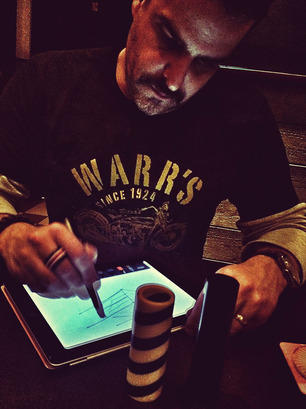
For the uninitiated, how do those materials workMoonglow, for example?
Moonglow is a proprietary material that gathers ambient light and bleeds it back out over an extended period of time. It’s essentially a mega-output “glow-in-the-dark” material.
Moonglow and this green light lets me play with the design of my rings and watch straps. It lets you call designs things like “Isotope” and “Eclipse.” I really don’t take myself very seriously, so it’s great fun to poke fun at myself with these names. But of course Moonglow is not dangerous in any way. It’s completely non-radioactive so you can wear a ring to the airport without setting off any alarms.
And, if you can talk about the Blacklamp project then why not. Because it’s epic. The collaboration with Schofield Watch Company came about after SalonQP 2012. Giles Ellis of Schofield had apparently been asking around a bit about composites designers who did weirdo experimental stuff. I guess a few people gave him my name, and at this same London event he met several people who were wearing various rings of mine. It was such a great surprise when Giles called from London a few days later to invite me on board for a new project. The project is called the Blacklamp; a limited edition timepiece milled from solid carbon fiber composite. Schofield has a very unique aesthetic, one of a traditional English gentlemen’s brand. Not pilot watches, not navy SEAL watches, but classic, elegant pieces.
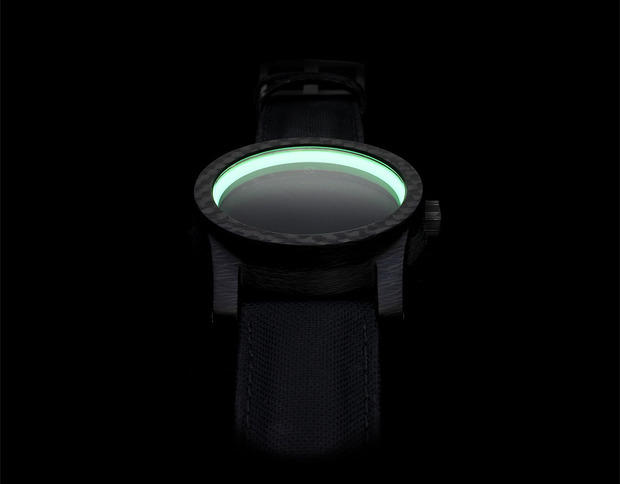
What excited me so much about the Blacklamp was that it was a carbon fiber watch that didn’t really seem to care it was made of carbon fiber. What I mean is, the material was chosen for its aesthetic not its aerospace performance characteristics. The inspiration came from striations in rockfaces along a British coastal beach, so these layers in the material we spoke of earlier were exactly what he was after. Early on in the design we were speaking about what kind of illumination system to have for the piece, what kind of superluminova (glowpaint used on numbers and hands) to go for. I sent Giles a photo of my Eclipse ring, with its layer of Moonglow set into solid carbon fiber, and we instantly started thinking in that direction.
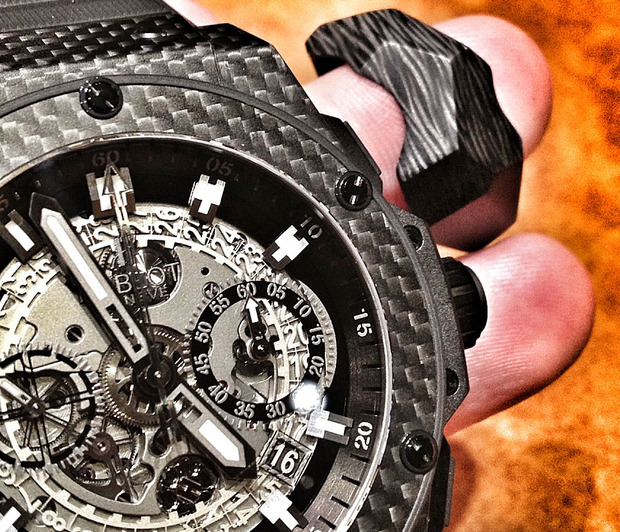
What kind of superluminova paint? None. None at all. We developed a small insert ring of Moonglow that was to be set directly into the dial of the Blacklamp. This illuminated the face of the watch from the perimeter inwards, giving a subtle lighting. In fact, in order to convince Giles that this would work, I made a little prototype model watch face and set a Moonglow ring onto it. I didn’t have any spare watch-hands laying around, so I used sunflower seeds. The perimeter illumination was enough that you could easily see the seeds. I don’t believe the production model will incorporate seeds though. Schofield has taken a major gamble by bringing an rookie on board with this, and I’m extremely thankful.
The Blacklamp is being unveiled at SalonQP 2013 in London this November.
